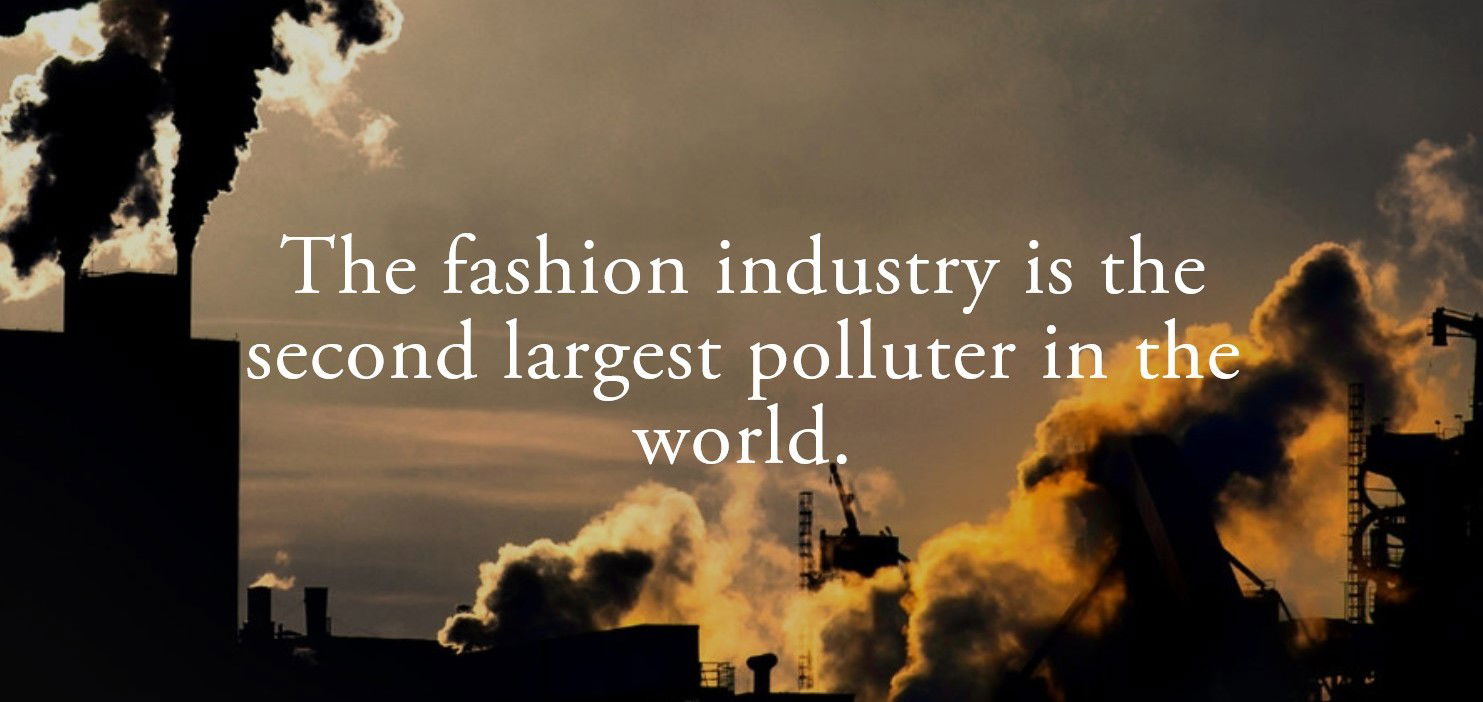Fashion's Environmental Impact

Fashion's Environmental Impact
Sustain Your Style
The fashion industry has a disastrous impact on the environment. In fact, it is the second largest polluter in the world, just after the oil industry. And the environmental damage is increasing as the industry grows. However, there are solutions and alternatives to mitigate these problems. The first step lies in building awareness and willingness to change.
FASHION & WATER POLLUTION
In most of the countries in which garments are produced, untreated toxic wastewaters from textiles factories are dumped directly into the rivers.
Wastewater contains toxic substances such as lead, mercury, and arsenic, among others. These are extremely harmful for the aquatic life and the health of the millions people living by those rivers banks. The contamination also reaches the sea and eventually spreads around the globe.
Another major source of water contamination is the use of fertilizers for cotton production, which heavily pollutes runoff waters and evaporation waters.
WHAT CAN WE DO ABOUT IT?
Choose clothes made in countries with stricter environmental regulations for factories (EU, Canada, US...).
- Choose organic fibers and natural fibers that do not require chemicals to be produced
FASHION & WATER CONSUMPTION
The fashion industry is a major water consumer.
Huge quantity of fresh water are used for the dyeing and finishing process for all of our clothes. As reference, it can take up to 200 tons of fresh water per ton of dyed fabric.
Also, cotton needs A LOT of water to grow (and heat), but is usually cultivated in warm and dry areas. Up to 20,000 liters of water are needed to produce just 1kg of cotton. This generates tremendous pressure on this precious resource, already scarce, and has dramatic ecological consequences such as the desertification of the Aral Sea, where cotton production has entirely
WHAT CAN WE DO ABOUT IT?
Choose fibers with low water consumption such as linen, recycled fibers, etc
FASHION & MICROFIBERS IN OUR OCEANS
Every time we wash a synthetic garment (polyester,nylon, etc), about 1,900 individual microfibers are released into the water, making their way into our oceans. Scientists have discovered that small aquatic organisms ingest those microfibers. These are then eaten by small fish which are later eaten by bigger fish, introducing plastic in our food chain.
WHAT CAN WE DO ABOUT IT?
Choose natural or semi-synthetic fibers.
FASHION & WASTE ACCUMULATION
Clothing has clearly become disposable. As a result, we generate more and more textile waste. A family in the western world throws away an average of 30 kg of clothing each year. Only 15% is recycled or donated, and the rest goes directly to the landfill or is incinerated.
Synthetic fibers, such as polyester, are plastic fibers, therefore non-biodegradable and can take up to 200 years to decompose. Synthetic fibers are used in 72% of our clothing.
WHAT CAN WE DO ABOUT IT?
FASHION & CHEMICALS
Chemicals are one of the main components in our clothes.
They are used during fiber production, dyeing, bleaching, and wet processing of each of our garments.
The heavy use of chemicals in cotton farming is causing diseases and premature death among cotton farmers, along with massive freshwater and ocean water pollution and soil degradation.
Some of these substances are also harmful to the consumer (see section about toxicity).
WHAT CAN WE DO ABOUT IT?
- Choose organic fibers.
- Choose sustainable brands.
- Always wash new clothes before using them for the first time.
- Look for garments with certification label controlling chemical content such as OEKO-TEX®, GOTS, or BLUESIGN®.
FASHION & GREENHOUSE GAS EMISSIONS
The apparel industry accounts for 10% of global carbon emissions.
The global fashion industry is generating a lot of greenhouse gases due to the energy used during its production, manufacturing, and transportation of the millions garments purchased each year.
Synthetic fibers (polyester, acrylic, nylon, etc.), used in the majority of our clothes, are made from fossil fuel, making production much more energy-intensive than with natural fibers.
Most of our clothes are produced in China, Bangladesh, or India, countries essentially powered by coal. This is the dirtiest type of energy in terms of carbon emissions.
- Choose natural fibers.
- Buy less, buy better quality, mend clothes.
- Buy clothes made in countries powered by more renewable energy.
FASHION & SOIL DEGRADATION
The soil is a fundamental element of our ecosystem. We need healthy soil for food production but also to absorb CO2. The massive, global degradation of soil is one of the main environmental issues our planet is currently facing. It presents a major threat to global food security and also contributes to global warming.
The fashion industry plays a major part in degrading soil in different ways: overgrazing of pastures through cashmere goats and sheep raised for their wool; degradation of the soil due to massive use of chemicals to grow cotton; deforestation caused by wood-based fibers like rayon.
WHAT CAN WE DO ABOUT IT?
- Choose fibers friendly to the soil.
FASHION & RAINFOREST DESTRUCTION
Every year, thousands of hectares of endangered and ancient forests are cut down and replaced by plantations of trees used to make wood-based fabrics such as rayon, viscose, and modal.
This loss of forests is threatening the ecosystem and indigenous communities, as in Indonesia where large-scale deforestation of the rainforests has taken place over the past decade.
WHAT CAN WE DO ABOUT IT?
- Choose Lyocell/Tencel® instead of rayon, modal or viscose.
Sustain Your Style, a platform that supports sustainable fashion
